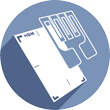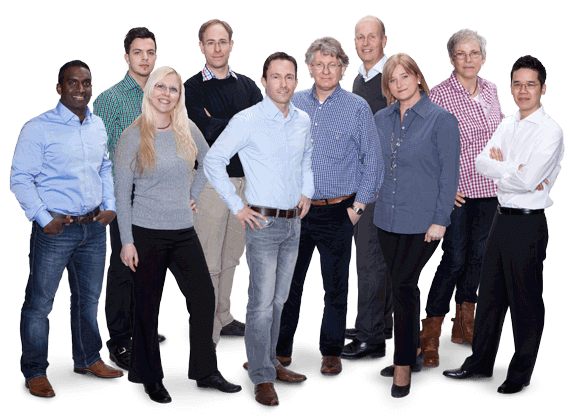Do you have questions? Contact a member of our dedicated team of design engineers! We’ll be happy to help you.
From Customer Concept to Complete OEM Sensor Solution
HBK provides cutting edge custom sensor solutions. We work with leading OEM manufacturers as a strategic partner to solve their most challenging requirements. As one of the largest manufacturers of strain gauges and electronics, our global engineering competency center enables us to design and manufacture highly customized solutions.
If you’re an OEM in need of a high volume custom sensor, whether large or small, and you don’t want to make any significant changes to your existing system, then we are the right partner for you. We have proven solutions across several markets:
Our Capabilities to Design and Produce a Custom Sensor Solution:
Our group of dedicated design engineers help OEMs add strain gauge-based pressure, force, torque, or load measurements to their product by adding a sensor or creating one from a customer-supplied part. When off-the-shelf, catalog sensors are not an option, our engineers can design a custom solution all the way through to the final assembly which includes sensor, load introduction assemblies, cabling/sealing, and electronics. We have and abide by the required international government certifications, meaning we can design and collaborate on all aspects of a sensor design and assembly.
Main offerings include:
- Strain gauges for transducer manufacturing (standard and custom)
- OEM gaging services for customer supplied parts
- Building block sensors such as blades for pumps for proof of concept
- Assemblies that include sealing and load introduction parts serve as one-stop-shop
- Electronics and amplifiers from built-in PGA to multi-channel communication protocol boards

The Process: Custom OEM Sensors that Fit into Your System
 Step 1: Engineering Conference to Develop Detailed Finite Element Analysis (FEA) and Design Work:
Step 1: Engineering Conference to Develop Detailed Finite Element Analysis (FEA) and Design Work:
A dedicated group of engineers will work with you to clarify your needs and desired function of the sensor, including which components should be considered for measurements. Here we will review the possibility of turning existing components into active sensors.
 Step 2: Fast Prototyping and Proof of Concept Sample Development:
Step 2: Fast Prototyping and Proof of Concept Sample Development:
Once the groundwork has been laid, we will begin to create a test concept and proposal. This will consist of a control drawing that shows how the requirements will be met, a partner-pricing cost estimate for manufacturing prototypes, and a target price for volume production. Through rapid prototyping, a functional test sensor can be developed in just a few weeks. Due to our years of expertise and global competency center, we can accelerate our timelines.
 Step 3: Quality Processes, Certifications, and Standards:
Step 3: Quality Processes, Certifications, and Standards:
When prototypes are complete, the new OEM sensor design is installed in your applications for testing. We provide all test equipment and protocols if needed. We have extensive PPAP experience, local approving authorities, and others available upon request.
 Step 4: High Volume Production:
Step 4: High Volume Production:
Throughout the design process, we work with you as our OEMs to ensure an easy integration within your systems, facilitating accurate measurements through the life of the product. Once the necessary testing and procedures are successfully completed, the developed prototype can move seamlessly into series/volume production through one of our global manufacturing facilities.
Our lean manufacturing procedures ensure volume production to the highest quality standards.
Market Solutions:
Agricultural Machinery: Down force, load pins, and torque measurements in tractors, planting and harvesting machines to allow closed looped feedback on all types of critical mechanical movements. For example, downforce sensors can ensure seeds are planted at a predetermined depth across multiple rows and varied farm terrain. By measuring these forces accurately, depth of seeding becomes consistent across rows and terrain for best possible yield. The application of fertilizer or the spreading of seeds can be optimally adapted to soil conditions in the field.
eBikes: Customized OEM force and torque sensors provide accurate measurements on the drive and control systems that determines a proportional amount on the assisted motor power. The better the motor control, the better and more intuititive the experience will be for the rider. We design customized force sensors which can be designed to fit on the pedal, or torque sensors on other rotating parts to determine measure the feedback.
Medical Devices: From sensors that survive hundreds of autoclave cycles to hospital beds, and infusion pump pressure sensor, nearly every medical device with a plug has a pressure, force, strain gauge, load or torque sensor monitoring mechanical influences. As an example, we engineer sensors that are designed to give force feedback and can be built to withstand the rigors of multiple autoclave cycling.
Off Highway Vehicles: From the on-board vehicle pay load, to overload conditions and commercial vehicle scales, our rugged load and torque sensors are manufactured using robust and corrosion-resistant materials such as stainless steel and aluminum. We design sensors that provide the highest level of environmental protection and durability as well as to meet ANSI requirements. One example includes load sensing systems for boom lifts are designed to ensure accuracy and efficiency, saving time, money, and resources.
Robotic: Joint twist torque sensors and load sensors are designed to measure the torque in the wrist or load in the foot in robots (grippers and actuators).
Energy: Sensors for feedback loops in smart valves designed to be able to precisely monitor and measure the position, condition, and flow rate of the valve for precise control and measurement of flow rates.
Scientific Instruments: Pressure sensors designed to accurately measure and automate the amount of collection and disbursement of materials within machines such as DNA sequencing as well as sensors to measure the impurity and chemicals using gas chromatography machines.
Smart Tools and Actuators Housing: Highly custom, fully integrated strain gauge-based sensors designed to fit into smart tools and actuators housings or anywhere within the mechanical system giving you greater flexibility to have the load cell designed around your system and desired specifications. For example, reactionary torque sensors can be used to provide specific electronic torque measurement to a fastener such as a bolt.
Sports Equipment: Strain gauge, torque, force, and load sensors design for indoor and outdoor sport applications which provide a real-time feedback on equipment such as bikes, fitness equipment, and several more. For example, most bicycles have power meters which use customized strain gauges required to adapt and fit into small space. The sensors measure the torque when combined with angular speed which calculates power. The sensors are design to fit on the crank, rear hub or pedal.
 Frequently Asked Questions:
Frequently Asked Questions:
Stay Up-to-Date on the Latest Information:
- Register for our new OEM Sensors newsletter and get the latest white papers, video tutorials and best practices.
- Check out our strain gauge knowledge base to enhance your knowledge and get valuable tips and tricks from the best strain measurement experts.
- Take advantage of our seminars and trainings offered through the global HBK Academy.
 The Route to Measurement Transducers
The Route to Measurement Transducers
This free reference book discusses the basics of transducer construction: Material selection, construction, connection, and compensation.

Contact Our OEM Sensor Team
Contact our experienced team of design engineers for more information and to discuss your project needs.
Recommended webinars, articles, and downloads:
Brochure: OEM Sensors: Custom Load, Force, Torque and Pressure Sensors for OEM Applications
Baixe agoraBrochure: Solutions for the Agricultural Industry
Baixe agora
Contact Our OEM Sensor Team
Contact our experienced team of design engineers for more information and to discuss your project needs.